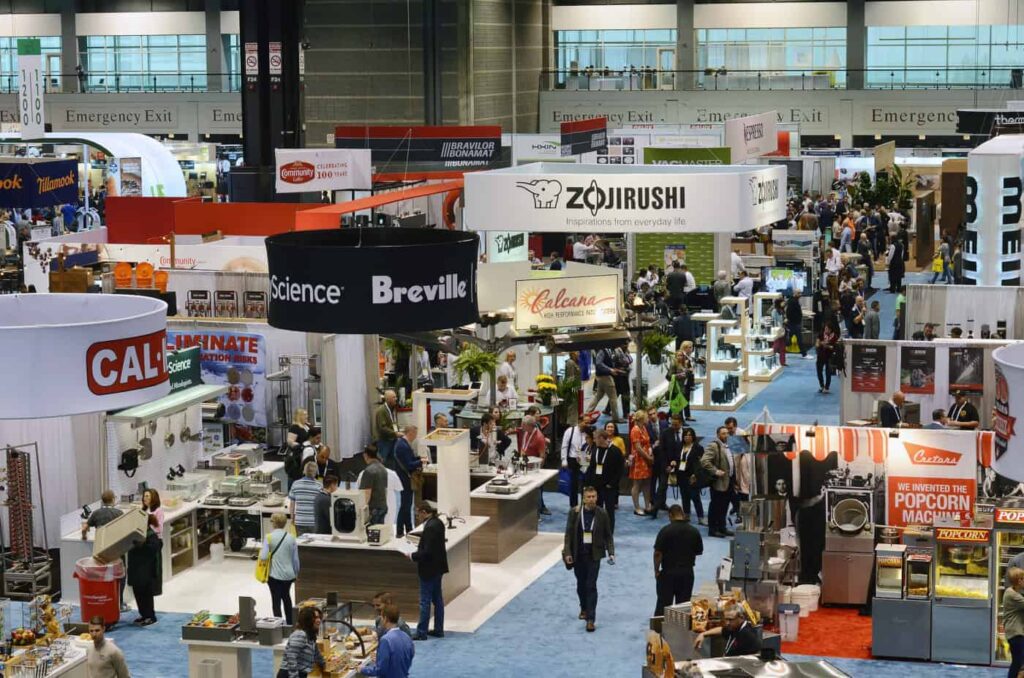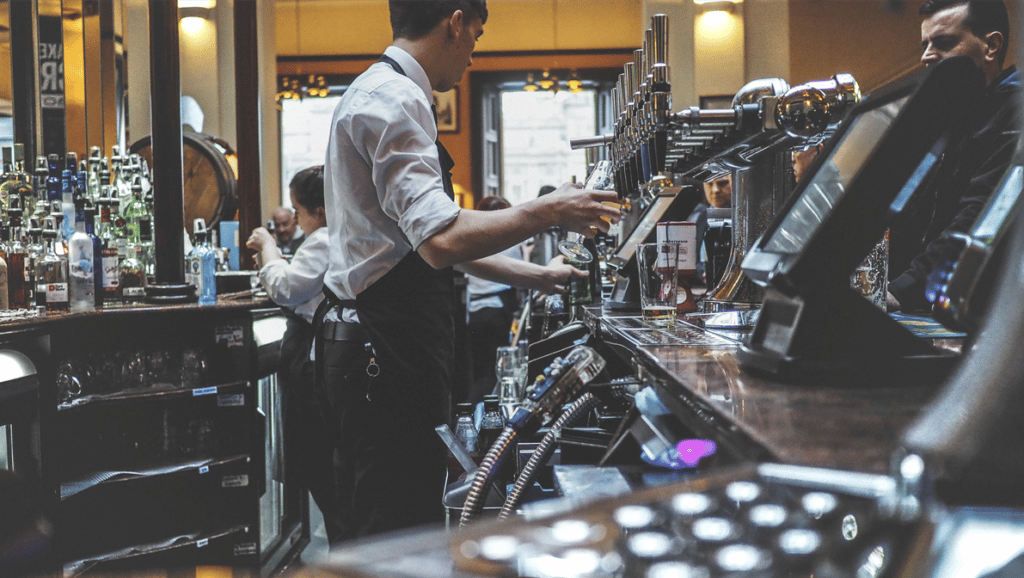Restaurant forecasting is imperative for accurately predicting your labor and purchasing spends. If your forecasts are off and you understaff or under order inventory, it negatively impacts the guest experience, and ultimately the bottom line when you lose business as a result, or your managers are forced to comp meals to compensate for poor service.
Conversely, if inaccurate forecasting results in over ordering or overstaffing, it’s going to negatively impact your prime cost as a percentage of sales. In Part 1 of this two-part series, you learned the importance of forecasting in restaurants and why 2022 may not be like restaurant sales forecasting in any other year. Part 2 details restaurant forecasting methods, with a focus on labor demand forecasting and food demand forecasting.
What is restaurant forecasting?
Restaurant demand forecasting leverages historical revenue data, information about current conditions, and knowledge of external events to help project future sales levels. Restaurant forecasting implications can be applied to your two major costs – inventory and labor – because these are the two variable expenses in which you have the potential to lose the most money.
How to forecast restaurant sales
If you have your restaurant sales forecast in your restaurant management software, you can then predict what the precise amount of future inventory and product you must order, based on those sales forecast numbers from your restaurant forecasting software. You can look at historical consumption patterns and shelf life of your finished goods. From that data, you can determine that you’re using X amount of product that costs Y dollars, and it generates Z in revenue. Then you can start to dial into exactly how much product you need based on that forecast. And the same goes for labor. You want to ensure you’re delivering a positive customer experience, but at the same time, you want to make sure you’re keeping your labor budget in line.
Using a labor matrix from your forecast for scheduling
A labor matrix can help you get into the right mix of labor skills versus dollars. You can build out what your labor matrix looks like, based on the volume of dollars that are coming through the door. And when it comes to labor, you must get granular, down to the hour.
You must get down to that hourly forecast to figure out what you need on the floor. It’s critical to see how your store is performing on an hourly basis versus daily, especially when it comes to hourly employees.
So how do you do all this? First you want to break the forecast down into days and weeks. You can forecast for the month, but you must break that down into a daily and weekly forecast and use the smallest period that’s impacted by the shift. Whether it’s ticket times or day parts, you want to get granular. With QSR, you might want to look at 15-minute increments, while fine dining and other sit-down restaurants might be better served going by day part.
When you’re forecasting for those labor periods, you’re looking at the historical sales in each period for fluctuations throughout the day. Look at what you did last week, last month, and drop that into your matrix. When you’re developing a matrix, you want to figure out how many employees you need per dollar. For example, if you’re going to do $500 in sales, ask yourself what that looks like in terms of bodies. How many bodies do you need for $500? How many bodies do you need for $1,000 or $1,500? Then, keep building on the matrix until you’ve built out exactly what you need to open the store all the way to closing the store.
You must also take location and other occurrences into consideration. For example, on the East Coast, you’ll want to factor in the impact of weather on your sales, especially this time of year. No matter where you’re located, you must think about how events, holidays, construction activity and other factors could affect traffic into your restaurants.
It’s important to ensure you understand what’s happening and find a way to track that information. If your employee scheduling software allows you to add events, you can tag the day, so you know what’s happening, whether it’s a sporting event, road construction, community event or holiday.
This information is also important because next year when you forecast for the month, you’ll know why, for example, you only did $2000 on a Friday last year. You’ll be able to see that there was a big construction delay that shut your restaurant down that night. It was a one-time event, so you’ll know you must increase your forecast for that Friday night in your upcoming forecast.
Track what’s happened in the past so that when you’re making your restaurant financial projections for the future, you know exactly why a number was an anomaly. That’s critical. You could also track these daily events in a manager log, so, you’ll be able to look back on those events and use them to set your benchmarks for the future.
Labor matrix example from restaurant forecasting data
In the labor matrix example above, it shows forecasting by the hour. You’ve told the software how many bodies you need per dollar of business, and the software is taking your matrix and then applying that to your hourly forecast, and it’s telling you exactly what you need to staff.
It completely takes the guesswork out of scheduling. You know exactly how many bodies you need, at what time of day, considering when you need them and when you don’t need them.
Employee scheduling example from restaurant forecasting and budgeting data
The above example of a scheduling module shows another way for scheduling. The red box indicates labor percentages and goals for the week. Those come from the budget.
Those are the budgeted labor percentages for the week. You then add shifts to the schedule. The software looks at your forecast dollars and tells you whether you’re above or below your budget and labor.
Obviously, you must consider the days of the week. For example, Monday is never going to be on target because it’s typically a slow night. While you’re not likely to hit your labor goals for Monday, you’ll make it up on Friday and Saturday.
Say you get to Wednesday and your forecast is 10% shy. You might want to look at adjusting your schedule for the remainder of the week. This mid-week pivot will help you hit those labor numbers.
Using a Sales Per Labor Hour (SLPH) tool, you’ll know how many hours you need based on the forecasted dollars you entered in the software. Using a powerful tool like SPLH is not only a time saver but is also going to hold your managers accountable. Additionally, it will help you hit the labor goals that you established at the beginning of the year.
Restaurant forecasting by revenue center
It’s critical now to forecast by revenue center. Get as granular as possible when it comes to looking at your revenue. Beyond looking at the overall sales, examine your dine-in sales versus delivery versus takeout versus drive-thru.
Use your point of sale (POS) system to separate your revenue by those revenue centers. This helps you determine exactly how many bodies you need for different types of service. If you analyze the data, you can make smart decisions about what labor allocations you need for dine-in versus off-premises options.
For dine-in, say you need a couple of cashiers, line cooks, servers, busboys, and dishwashers for your forecasted dollars. That’s a much different number than just two people running a drive through for those same forecasted dollars. So, there are very different shifts based on which of your revenue centers are generating the revenue. By analyzing those numbers by revenue center, you’re better equipped to optimize your labor.
For example, suppose Monday dine-in lunch is typically slow, but you do a good takeout business. You might consider shifting to takeout only during Monday lunch, which requires fewer bodies to run. There are different strategies you can use, but it’s important to recognize where your revenue is coming from, and how many hourly employees you’re going to need to support each of these different revenue centers.
You must also consider that there are non-revenue generating periods that require bodies, for example opening and closing. Factor those periods into your labor matrix as well to ensure your restaurant is covered for those periods on the schedule.
After budgeting and forecasting, manage labor in real time
You’ve set up your budget, your forecast, and your schedule. Now, you must execute on the floor because labor is a real-time management process. You must be able to manage your labor costs in real time. You can have the most solid forecast, the most solid schedule, but you do not know what’s going to happen when you open your doors.
You must be able to adjust on the fly so that you can stay close to what your labor goals are. Get in the habit of checking your labor every 15, 30 or 45 minutes, or at the most, every hour. You want to see how you’re trending against the sales that are coming through the door. It’s all about managing labor through those peaks and valleys. You never want to see your sales ebbing and flowing, while your labor remains consistent.
Labor should follow the trend of sales throughout the day. That’s essential to get your labor costs down against your forecasted dollars.
Restaurant forecasting for inventory
Most operators forecast labor and sales, but fewer use forecasting for inventory. The process is similar, and you already have your daily or weekly forecast. What you want to do with those numbers for inventory is determine usage trends by using a metric called usage per $1000. As you take your inventory every week in your inventory software, start by looking at your sales.
If you forecast $4000 in sales tomorrow and you don’t have any avocados, your software tells you how many cases of avocados you need to order based on consumption, usage, and product mix. From those data points, you can determine exactly how many avocados you should order to prevent over or under ordering.
Forecasting your inventory needs by tracking and analyzing usage is critical to making this whole process work correctly. If you look at your stock usage compared to your product mix, you’re going to start to see trends that allow you to forecast future purchasing orders. And those trends will also help you predict menu item orders and changes. Your menu must iterate and evolve accordingly.
You’re going to discover product on your menu that’s not moving. If it’s not selling, remove it from your menu. This is where the 80/20 rule applies, meaning 80% of your sales are made up of 20% of your menu. So, it’s important that you know what your key items are. A smart way to do this is by taking a daily key item inventory.
Identify your top 20 items and count those every day. Doing so will move the needle on your food cost because you’re going to see how that usage is affecting your food cost, and how you should be ordering for those key items, and then reviewing that against your purchasing data.
If you can’t get to a point where you can predict what usage will be for every $1000, then set some pars. Figure out what you know the bottom line is for having inventory on hand. How much product do you need to maintain your minimum break-even sales day? PARs can be an extremely powerful force for controlling inventory bloat as well.
Conclusion
If you have the right technology solution in place, including restaurant forecasting software and budgeting software, you can optimize your CoGS and labor costs to increase your bottom line.
If you’d like to forecast accurately to make impactful decisions regarding labor and inventory, consider a restaurant-specific management system that includes forecasting tools. Restaurant365 is an all-in-one, cloud-based, restaurant-specific platform that incorporates accounting, inventory, scheduling, operations, payroll +HR, and reporting. In addition to POS integration, R365 is also integrated with your vendors and bank.



